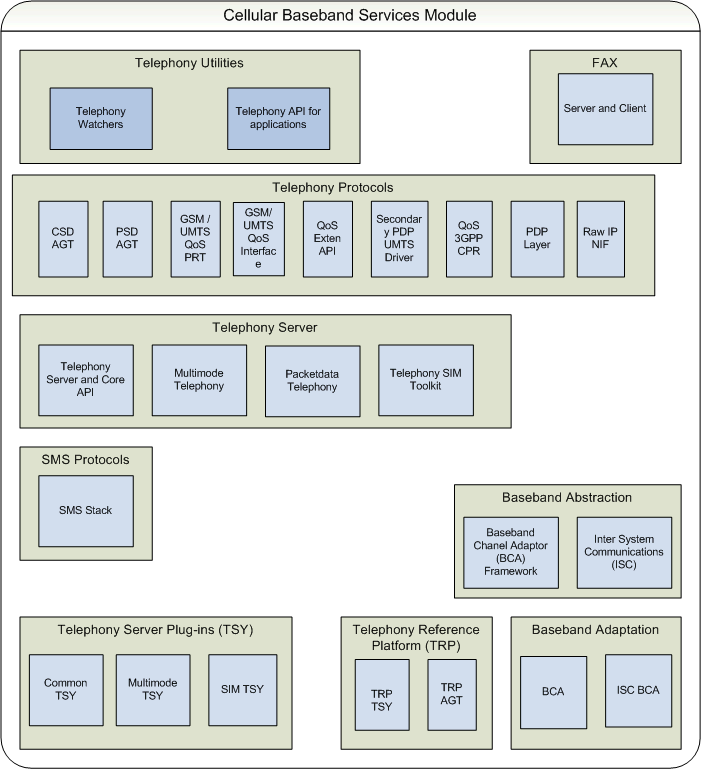Quick Start
Cellular Baseband Services provides the framework that allows applications to access the phone's telephony functions and allows handset manufacturers to implement support for their telephony hardware. The components of the Cellular Baseband Services support the standards defined for the GSM, GPRS, EDGE and UMTS networks. Cellular Baseband Services works with the Communications Framework to provide the telephony functions.
Getting started with Cellular Baseband Services
The Cellular Baseband Services provide a rich network-independent framework and common interface to support voice, messaging, and other telephony applications. The plug-ins to the framework enable the handset manufacturers to extend the telephony functions.
Use Core Telephony APIs to make voice, data and fax calls.
Use Multimode Telephony APIs to access the specialised set of telephony functions that are provided by the standards such as GSM and WCDMA.
Use telephony Packet Data APIs to access a phone network's packet data service.
Use SMS Stack to send and receive SMS messages.
Use Telephony Server Plug-ins to communicate with baseband hardware.
Use Hardware Resource Manager to control and retrieve notifications from phone hardware elements like light, vibra and battery.
Use the telephony SAT API to control the SIM Application Toolkit (SAT) applications stored on the Subscriber Identity Module (SIM).
Use telephony Watchers to retrieve status information about call and signal strength.
Use telephony API for applications to get access to the common telephony functions from applications through a simple interface.
Architecture
The following diagram shows the Cellular Baseband Service collections, and the components in each collection.
Technologies
SIM Application Toolkit (SAT)
The telephony SAT API enables the handset manufacturers to write SAT engines. SAT engines provide the functions for the SIM applications. The telephony SAT API (ETelSat) supports both GSM and WCDMA networks.
Packet Data Service with MBMS
The telephony Packet Data API enables clients to use the packet data services in the GPRS, EDGE and WCDMA networks. The telephony packet data API also supports MBMS protocols in the packet data service.
SMS
The telephony SMS stack enables clients to process SMS messages, and supports different encoding methods. The telephony components provide the communication functions to send and receive SMS messages. A higher level framework for users to access SMS messages is provided by the Mobile Messaging module components.
High Speed Uplink Packet Access
The telephony multimode API and the telephony packet data API implement the support for High Speed Uplink Packet Access. This protocol is described in detail in High Speed Uplink Packet Access.
Copyright ©2010 Nokia Corporation and/or its subsidiary(-ies).
All rights
reserved. Unless otherwise stated, these materials are provided under the terms of the Eclipse Public License
v1.0.
